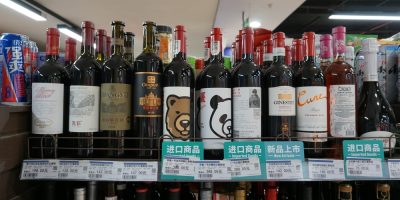-
Italien
U.S. Tariffs at 107% on Italian Pasta? Another episode in the saga of exporting to the United States
8 Oktober 2025
- Verträge
- Vertrieb
- Steuer
Remember the USA – EU agreement on 15% tariffs? I wrote that with a negotiator like Trump the game is never over (article here) and—after the recent interlude featuring a threat of 100% tariffs on pharmaceuticals—the U.S. government has announced the imposition of an overall 107% duty on Italian pasta, which could take effect on January 1, 2026.
Where this new duty comes from
The antidumping investigation was launched by the U.S. Department of Commerce at the request of certain competing American companies and is based on a 1996 antidumping order that allows for periodic reviews of imports of Italian pasta. The Department of Commerce conducts these checks annually to assess whether Italian producers are selling pasta at prices lower than the U.S. domestic market, a practice known as “dumping.”
Companies involved in the investigation
The Department of Commerce selected two sample companies for in-depth analysis, defined as “mandatory respondents”: La Molisana and Pastificio Lucio Garofalo. According to the official document published by the U.S. administration, for the period from July 1, 2023 to June 30, 2024, both companies allegedly sold their products below market prices, resulting in the imposition of a duty of 91.74%.
U.S. authorities justified this percentage by claiming the two companies did not provide complete or compliant information as requested by the Department and were therefore insufficiently cooperative during the investigation. What is very important is that, in addition to the two companies directly examined, the additional 91.74% duty is also applied to numerous other Italian producers not individually reviewed. This methodology, while formally permitted under U.S. law as an exception, is being applied without any direct verification of the other companies.
Next steps in the procedure
Italy’s Ministry of Foreign Affairs moved immediately, formally intervening in the proceeding as an “interested party” through the Italian Embassy in Washington. The Foreign Ministry is working in close coordination with the companies concerned and, in concert with the European Commission, to persuade the U.S. Department to revise the provisional duties.
The two companies involved (La Molisana and Garofalo) can submit documentation to contest the dumping allegations. However, if dumping is confirmed, the Department of Commerce will instruct Customs to apply antidumping duties on goods sold and entered into U.S. commerce.
The preliminary nature of this determination means there is still room to change the decision before it becomes final.
Possible effective date
The new super-duty of 91.74%, which will be added to the existing 15% tariff for a total of 107%, is scheduled to take effect on January 1, 2026. This date therefore represents a crucial deadline for all ongoing diplomatic and legal actions.
If confirmed, the economic impact would be significant: in 2024, Italian pasta exports to the United States reached a value of €671 million according to Coldiretti, accounting for nearly 17% of the sector’s total exports. A 107% duty would risk seriously undermining competitiveness in one of the most important markets for Italian agri-food products.
What to do between now and January 1, 2026?
At this stage, the entry into force of the new duty depends on the outcome of the ongoing procedure: given what has happened in recent months, and the political use the U.S. administration has made of tariffs—well beyond their technical function—it is reasonable to be pessimistic.
So, what to do? In recent months we have seen companies react to the uncertainty over the fate of the tariffs in three ways:
- Some rushed to ship as many products as possible before the potential effective date of the duty;
- Some granted—upfront—discounts equivalent to the threatened duty, in case it came into force;
- Some suspended orders, pending definitive news on the impact of the duties.
These are all valid options, but other effective tools for managing the uncertainty caused by the flurry of announcements, negotiations, and threats from the U.S. administration should not be forgotten: the risk of new duties being introduced, or existing ones being increased, can be managed in the contract by agreeing with the U.S. importer how any tariff change will affect the product.
The parties can stipulate, for example, that the increase will be split equally; or that the importer will bear it beyond a certain threshold; or that if the duty exceeds a certain level, the contracts may be terminated. You can find a deeper dive in this article.
The only certainty is that trade relations with the U.S. will stay unpredictable for a long time, and it’s vital to carefully manage the risk factors involved in selling products there. Right now, the focus is on tariffs and prices, and I encourage you to take this chance to thoroughly review existing agreements and assess whether—and how—other important points are addressed that could entail significant liabilities: we discuss them, very practically, in this book.


























